Hollow rocks and hollow holds: There’s a good chance you have been doing them wrong, and because of it, there’s an even better chance they’re not translating to make your other gymnastics skills—like ring rows, pull-ups, push-ups, handstands, and muscle-ups—more efficient.
What do I mean by hollow body position?
Hollow rocks and hollow holds: There’s a good chance you have been doing them wrong, and because of it, there’s an even better chance they’re not translating to make your other gymnastics skills—like ring rows, pull-ups, push-ups, handstands, and muscle-ups—more efficient.
What do I mean by hollow body position?
It’s characterized by a shortening of the anterior part of the torso (abs are contracted) and a posterior pelvic tilt (to achieve the posterior pelvic tilt, think about squeezing your butt cheeks together). Ultimately, doing this puts your body in a hollow, or banana-shaped, position—hence the name.
If you’re in a hollow hold position on the floor, it means just your bum and lower back only are touching the floor. Your shoulder blades and extended legs shouldn’t be touching the floor, your heels should hover just a couple inches off the ground, and your arms should be extended straight overhead squeezing your ears.
This position should look the same during most gymnastics movements we do at the gym, be it a pull-up, a ring row, or a handstand hold.
In the picture below, you can see the feet, hips, vertebrae, shoulders, and hands are all stacked on top of each other in a perfect hollow body position in a handstand.
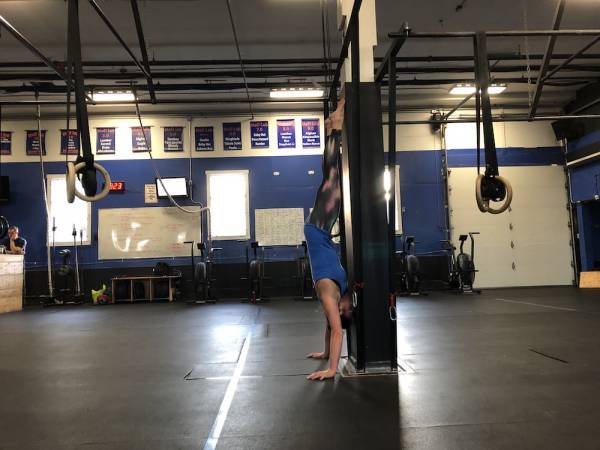
A Word On the Common Mistakes of the Hollow Hold
Often, when I see people performing hollow rocks and hollow holds, none of the above standards are met. Sometimes feet are way too high in the air, leaving the person in an almost L-shaped position. Other times, lower backs peel off the ground, and other times still shoulder blades remain on the ground.
And the more tired you become, the more the position will break down…
On the pull-up bar and in a handstand hold, this inability to keep a strong hollow body position usually translates to a massive spinal extension, which we want to avoid.
In short, if you can’t hold a stable hollow body position on the floor for a good 45 seconds to a minute, all gymnastics movements will become a little more dangerous in terms of developing injures, as well as a little less efficient.
Below are five ways to start building the hollow body position to gain the necessary core strength and stability to move to more advanced gymnastics skills.
1. Deadbug Holds
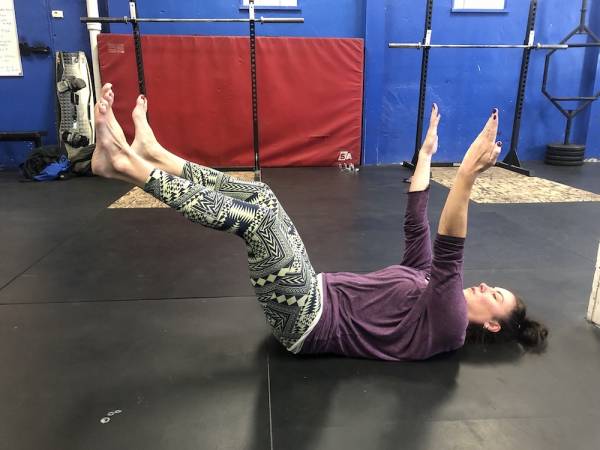
The key here is to make sure your lower back stays on the ground. The larger the angle between your shins and quads, and between your quads and your torso, the harder it will be. Start with a 90 degree angle. If that’s not challenging, then push your legs away from your body to lengthen your angles.
- Test: Can you hold a perfect deadbug hold for 3 minutes?
2. Wall Deadbugs
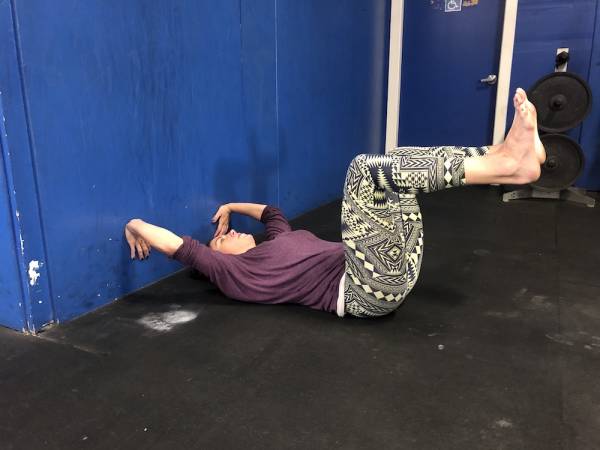
The idea on these is to press your hands into the wall to build more tension in your body. Focus on pushing as hard as you can so your core is on fire. No matter how fit you are, if you’re working on building maximum tension in your body on these, they will be difficult.
- Log 2-3 minutes (break up as needed).
3. Banded Deadbugs
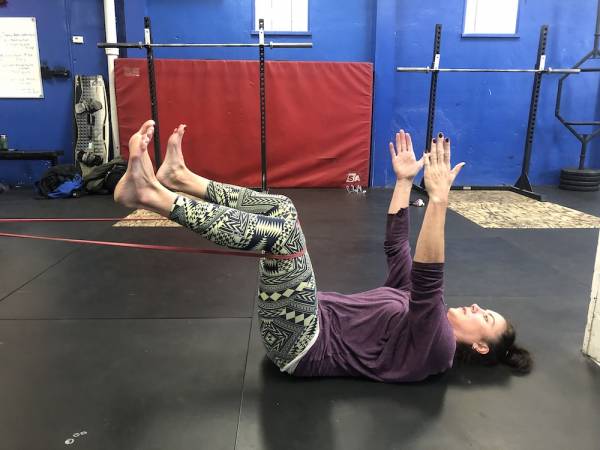
Similar to the wall deadbugs, the band will add extra tension and will force you to work a little harder to maintain the perfect position.
- Log 2-3 minutes (break up as needed).
4. Straight-Legged Deadbug Holds
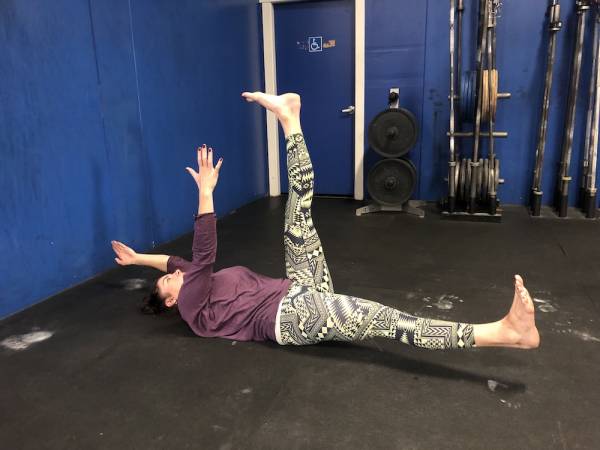
If your hamstring flexibility permits, try these. Keep your lower back and glutes to the ground and your legs extended.
- Perform 3 sets of 30 seconds to 1 minute hold per leg.
5. Tuck-Ups
Tuck-ups will get you working the hollow body position in a more dynamic fashion. Focus on doing these with control (two seconds to tuck-up and two seconds to release into the hollow body hold position).
- Log 3 sets of 8-20 reps at a slow tempo.
Master these and a hollow body hold and hollow rocks will start to feel like a breeze!
The Hollow Mash-Up
If you think your hollow body position is already pretty solid, try this hollow body mash-up test. Can you do it unbroken?
- 10 V-Sits
- 15 Tuck-Ups
- 20 Hollow Rocks
- 30 Second Hollow Hold






